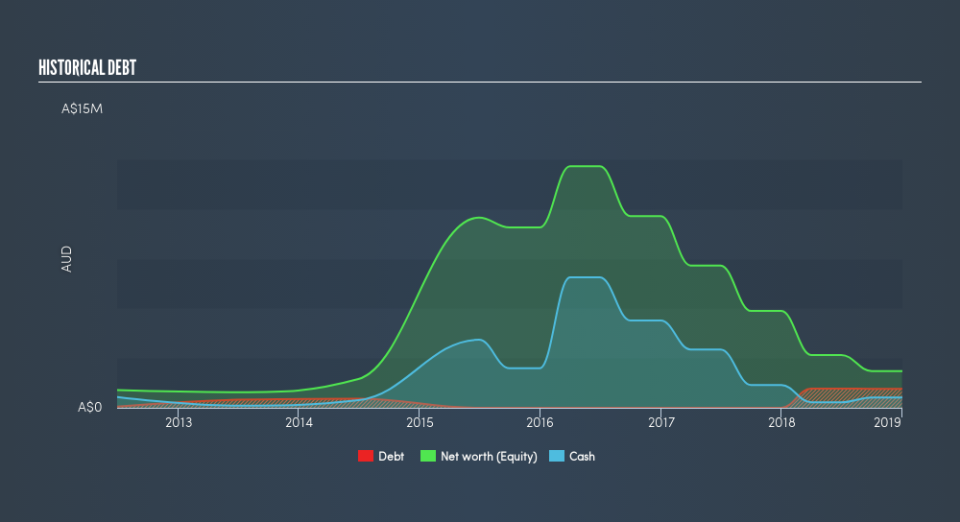1st Group Limited (ASX:1ST): Time For A Financial Health Check

While small-cap stocks, such as 1st Group Limited (ASX:1ST) with its market cap of AU$14m, are popular for their explosive growth, investors should also be aware of their balance sheet to judge whether the company can survive a downturn. Since 1ST is loss-making right now, it’s essential to evaluate the current state of its operations and pathway to profitability. The following basic checks can help you get a picture of the company's balance sheet strength. Nevertheless, this is not a comprehensive overview, so I’d encourage you to dig deeper yourself into 1ST here.
Does 1ST Produce Much Cash Relative To Its Debt?
Over the past year, 1ST has borrowed debt capital of around AU$958k including long-term debt. With this ramp up in debt, the current cash and short-term investment levels stands at AU$519k to keep the business going. We note it produced negative cash flow over the last twelve months. As the purpose of this article is a high-level overview, I won’t be looking at this today, but you can take a look at some of 1ST’s operating efficiency ratios such as ROA here.
Can 1ST meet its short-term obligations with the cash in hand?
With current liabilities at AU$1.7m, it seems that the business may not be able to easily meet these obligations given the level of current assets of AU$1.1m, with a current ratio of 0.68x. The current ratio is the number you get when you divide current assets by current liabilities.
Is 1ST’s debt level acceptable?
With a debt-to-equity ratio of 52%, 1ST can be considered as an above-average leveraged company. This is somewhat unusual for small-caps companies, since lenders are often hesitant to provide attractive interest rates to less-established businesses. Though, since 1ST is presently loss-making, sustainability of its current state of operations becomes a concern. Running high debt, while not yet making money, can be risky in unexpected downturns as liquidity may dry up, making it hard to operate.
Next Steps:
Although 1ST’s debt level is towards the higher end of the spectrum, its cash flow coverage seems adequate to meet debt obligations which means its debt is being efficiently utilised. But, its low liquidity raises concerns over whether current asset management practices are properly implemented for the small-cap. I admit this is a fairly basic analysis for 1ST's financial health. Other important fundamentals need to be considered alongside. You should continue to research 1st Group to get a better picture of the stock by looking at:
Historical Performance: What has 1ST's returns been like over the past? Go into more detail in the past track record analysis and take a look at the free visual representations of our analysis for more clarity.
Other High-Performing Stocks: Are there other stocks that provide better prospects with proven track records? Explore our free list of these great stocks here.
We aim to bring you long-term focused research analysis driven by fundamental data. Note that our analysis may not factor in the latest price-sensitive company announcements or qualitative material.
If you spot an error that warrants correction, please contact the editor at editorial-team@simplywallst.com. This article by Simply Wall St is general in nature. It does not constitute a recommendation to buy or sell any stock, and does not take account of your objectives, or your financial situation. Simply Wall St has no position in the stocks mentioned. Thank you for reading.

 Yahoo Finance
Yahoo Finance 
